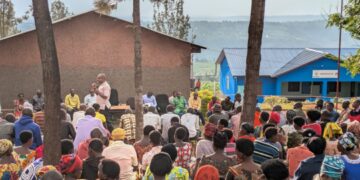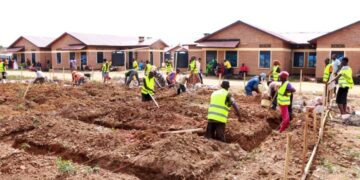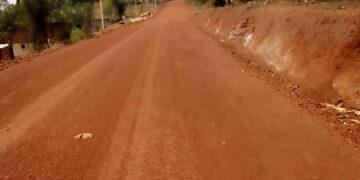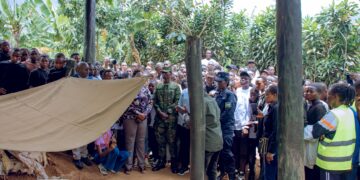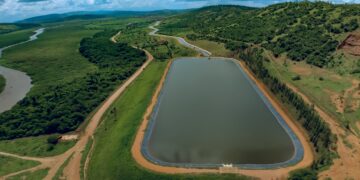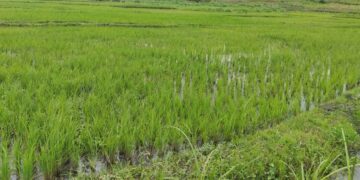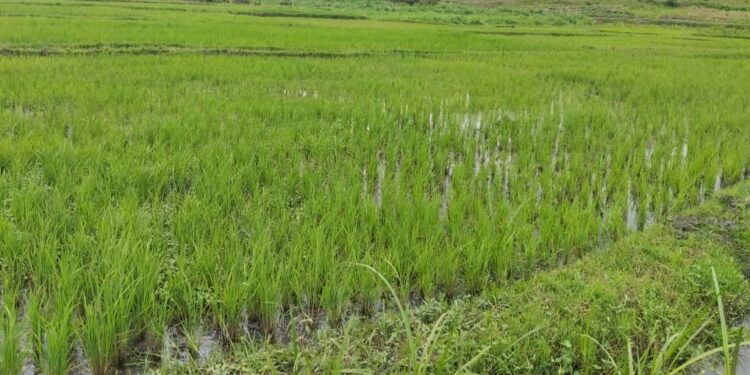Rice farmers in the Rwangingo marshland, located in Ngarama Sector, Gatsibo District, are praising the local authorities as the long-standing problem of insufficient water in the rice fields is set to be resolved in a sustainable way, thanks to the construction of a new dam and water canal in the marshland.
The Rwangingo marshland is one of the three areas that produce the highest rice yields in Gatsibo District, along with Kanyonyomba and Ntende. Before the construction of the new dam and water canal, the Rwangingo marshland produced about 950 tons of rice annually.
The Deputy District Mayor in charge of economic development, Jean Leonard Sekanyange, assured rice farmers in Rwangingo that no area prepared for rice cultivation will be left uncultivated due to water shortages.
He said: “Because the lack of water prevented people from cultivating the entire prepared marshland, a dam is now being constructed so that rice farmers will no longer be delayed in planting. This will allow rice planting both during the rainy season and the dry season without any obstacles. Farmers will also be able to expand their rice fields from 200 hectares to 600 hectares.”
Some rice farmers in Rwangingo told a MUHAZIYACU journalist that the main problem they faced was insufficient and unevenly distributed water in the fields, which limited their rice yields.
Souleiman Iyuhawumuryango, a resident of Ngarama Sector, said that now that a solution to the water problem is coming, they expect to increase rice production to levels seen before the dam, which will ensure adequate irrigation.
He added: “The problem we had was that water came in small amounts and unevenly, so it didn’t reach the fields properly. We believe this new canal will increase production because it is being constructed differently from the previous one, and by skilled people. We are confident that we will achieve significant yields, which will allow us to develop.”
Liberatha Ntawinanirwa, also a resident of Kigasha Cell in Ngarama Sector, said that previously only part of the fields received enough water, while other areas did not, resulting in poor rice growth in those sections.
She said: “We faced water shortages, which prevented us from getting sufficient yields. Normally, our marshland is very fertile and could produce impressive rice yields. A person with adequate water could harvest 4 to 5 tons. Once water reaches all the fields, we are confident we will get much higher yields.”
During the 2026A planting season in Gatsibo District, rice was planted on 1,311 hectares in the Rwangingo, Kanyonyomba, and Ntende marshlands.
This comes after an average yield of 5.8 tons per hectare in the 2024/2025 fiscal year.


